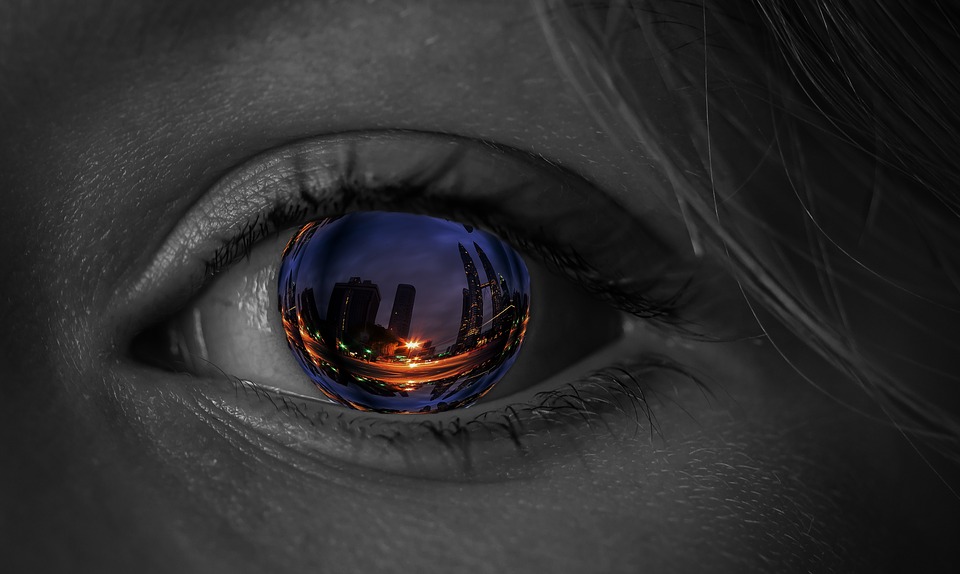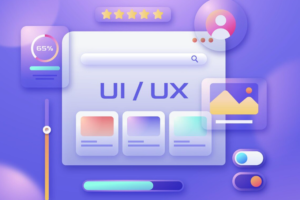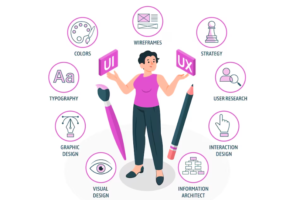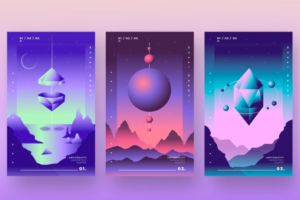2016 opened the plethora of surprises for the UX design fraternity. User experience reached its zenith, and with further advancements in technology, this trend continues strong into 2017. With the receding attention span of the average viewer, the selling experiences will be better, quicker and more engaging. The industry experts are laying their bets on trends like chatbots, Artificial intelligence (AI), and Virtual reality (VR). Raffaela Rein, CEO, and Co-Founder of online UX design school, CareerFoundry, says that we will witness some unprecedented and innovation user experiences in 2017.
6 UX design trends of 2017
Customization and digital technology platforms
Companies are well on their way of creating business models that are connected, collaborative, and of course, scalable. The end user will continue to get priority and will avail a plethora of opportunities in the competitive world. Apple iCloud users can access their notes, contacts, and photos from any of the Apple devices. It is technology well woven to provide the ultimate user experience. It will continue to evolve in the current year. As per reports of Accenture, the global market capitalization of platform companies is $2.6 trillion; they will continue their stronghold this year too.
Time-saving designs
The best user experiences are those that provide simple and convenient designs. The user easily navigates to the exact location (website/page) without any fuss. No frills, no tough instructions, just an easy system that guides you smoothly. And with chatbots and virtual reality trends gaining popularity, designs will become time saving for the consumers as well as the industry employees, if you’re wanting a live help chatbot for your website, you can look into how to make a bot. And saving of time would lead to better advancements and innovation of new techniques. Uber is the perfect example of a linear design which allows implementation of a single action at a particular time. Users find the app convenient and easy to use.
The user interface and beyond
UX designers have conquered the digital platforms and it is no secret that apps/ software with a design experience are more appealing to the consumer. If this is an area that the software used by your organization is somewhat behind on, using the services of a custom development company could help to build software solutions that are specifically designed for your needs. Businesses measure the engagement time of users to enhance their features. But now the ‘experience’ has become the ‘product’ itself. The need of the hour, therefore, is to measure how well the ‘experience’ is weaved into the customer’s life. Snapchat Spectacles is a fashionable accessory by Snapchat which allows users to interact with their platform. Users no longer require their phone to access the app as they have taken the user experience beyond the platform boundaries.
Specialization
UX design was a specialized field of interface design. Now companies will look for a more specialized talent for technologies like Virtual reality, Artificial intelligence and more. We have seen the chatbot technology being used to order food for quite some time now. These technologies will extend to sectors like automotive, banking, fitness, and health sectors. The UX will not just be the responsibility of the designer but entire UX team. There will be specialized personnel employed at every stage of the UX development process.
Virtual and Augmented Reality
From 3D interactive schematics to image recognition technologies, 2017 has a lot in store for us. These technologies are becoming affordable; all giant companies like Google, Apple, and Samsung are working towards improvising their VR technologies. The Snapchat geofilters is an incredible example of a VR experience that can warp, frame or enlarge the user’s snaps with different graphics and illustrations. This feature has reaped in huge profits for Snapchat.
In a work setting, technicians can receive all intricate details for problems using augmented reality software and thereby devise the ideal solutions. Moreover, VR can be used for training purposes as well. The tech and offsite drills can be conducted for new employees through virtual reality training to eliminate risks, increase retention, teach teamwork, and create a highly monitored learning environment.
UX for employees
There was always a buzz about the user experience being the ultimate consumer experience. We are partially correct here, though 2017 will see this trend extend further to the employee’s end. Automated services using robotics will become predominant for the manufacturing and service companies. Employers will replicate the ‘employee experience’ to understand how they work and deliver results. It will help companies in designing the best-automated processes which will ease the burden of employees and leave no scope for errors and loopholes. Further, if employee experience is enhanced, with methods put forward by the likes of Blueboard, and so is their productivity, they will come up with novel ideas and techniques of improvement. With a dedicated team of workers, businesses are sure to prosper.
2017 will be the reigning year for UX designers as their demand will continue to escalate. UX for mobile apps will still be in trend and even desktop websites will look like customized apps. The trend is towards creating conversational user experiences that will keep the consumers hooked on. So why not tap your UX skills where there is the highest potential? The application of UX will be seen in different fields and technologies, biometrics, voice recognition, and authentication processes. The UX trends that started in 2016 will get bigger and robust in 2017. And what could be more convenient than logging into your favourite app seamlessly without having to fill in login and password details?





